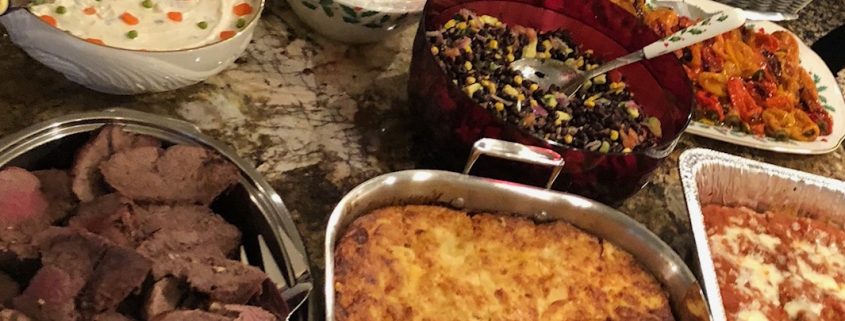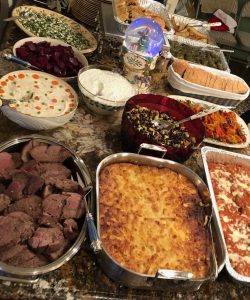3 Step Roadmap to a Food Safe Holiday
As the holidays approach, it’s very easy to get caught up in all the rush. Whether you are preparing to host a party or preparing a favorite dish to contribute to a potluck, it’s important to practice food safety to prevent foodborne illnesses during the holidays. Every party usually includes a guest that is vulnerable to food borne illness – the elderly, children, or pregnant woman.
Luckily, I’m here to help you ensure you continue with food safety practices even during the busy holiday season!
Food Safety During the Holidays
When it comes to food safety, there are 3 (of many) crucial steps to keep in mind: grocery shopping, preparing/handling food and storing food.It’s important to keep the following tips in mind during each step.
- Grocery Shopping
- Buy cold foods last to avoid temperature dropping into the danger zone. Perishable food kept in the Danger Zone (Between 40-140°F) for longer than 2 hours should be thrown out.
- Keep raw meat, poultry and seafood away from other foods in your grocery cart and when checking out, make sure these items are in separate bags.
- Preparing and Handling Food
- ALWAYS wash your hands before handling food. When else should you wash your hands? Before and after handling raw meat and before handling food that won’t be cooked, like fresh produce.
- Fresh produce should always be thoroughly washed under cool water. For leafy vegetables, submerge in a bowl of water and lift the leaves. This will allow all of the dirt to fall to the bottom of the bowl and leave your veggies nice and clean!
- Use separate cutting boards for raw meat and ready-to-eat items like vegetables or bread.
- Reduce cross contamination bypreparing uncooked recipes before recipes that include raw meat or seafood.
- Frozen food should NEVER be thawed on the countertop. Always thaw itin the refrigerator.
- Use a thermometer to check the internal temperature of your dishes to ensure they are cooked to proper temperature. Fresh beef, pork, veal, and lamb should be cooked to 145 ?F with a three-minute rest time; fish should be cooked to 145 ?F; ground beef, veal and lamb should be cooked to 160 ?F; egg dishes should be cooked to 160 ?F; and all poultry should be cooked to 165 ?F.
- Keep hot food hot and cold food cold. You canuse chafing dishes or crock-pots or ice trays to help you maintain a foods temperature.Hot items should remain above 140 ?F and cold items should remain below 40 ?F.
- Storing Food
- Store food in airtight containers or baggies for optimal freshness.
- Freeze food that you don’t plan on eating right away in freezer friendly bags.
- Leftovers should always be eaten within 3-4 days.
- When in doubt throw it out! If you are questioning whether or not it’s still good,toss it – it’s not worth the risk!
Remember, what you do when preparing your holiday meals and storing leftovers is just as important as the actual meal! It’s important to continue to practice food safety for you and your guests’ health.
Your Turn To take Action:What do you do with all your holiday leftovers? Share with us in the comments below.



Leave a Reply
Want to join the discussion?Feel free to contribute!